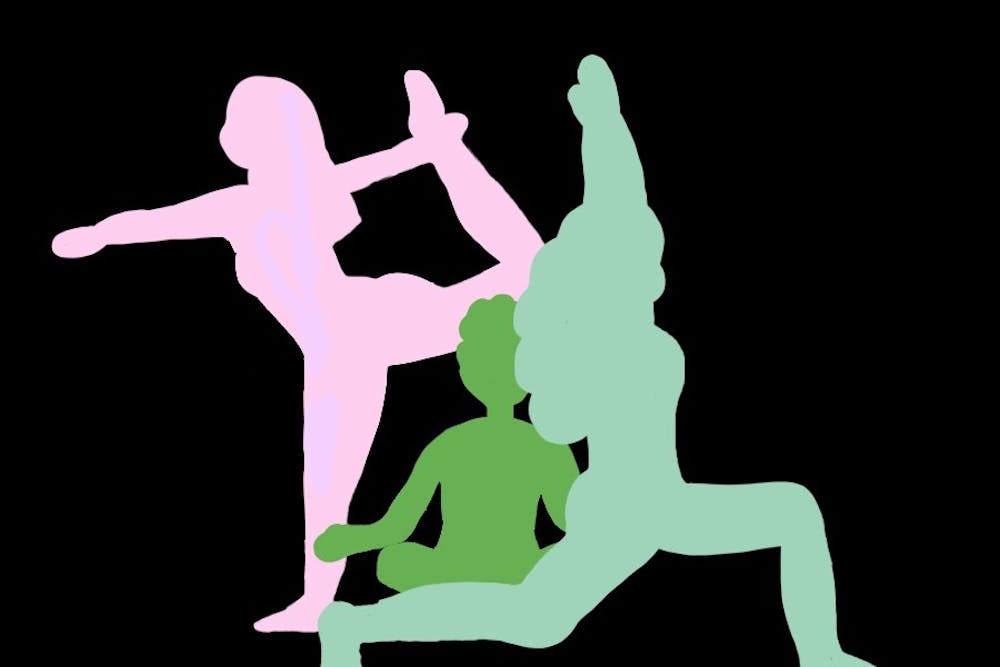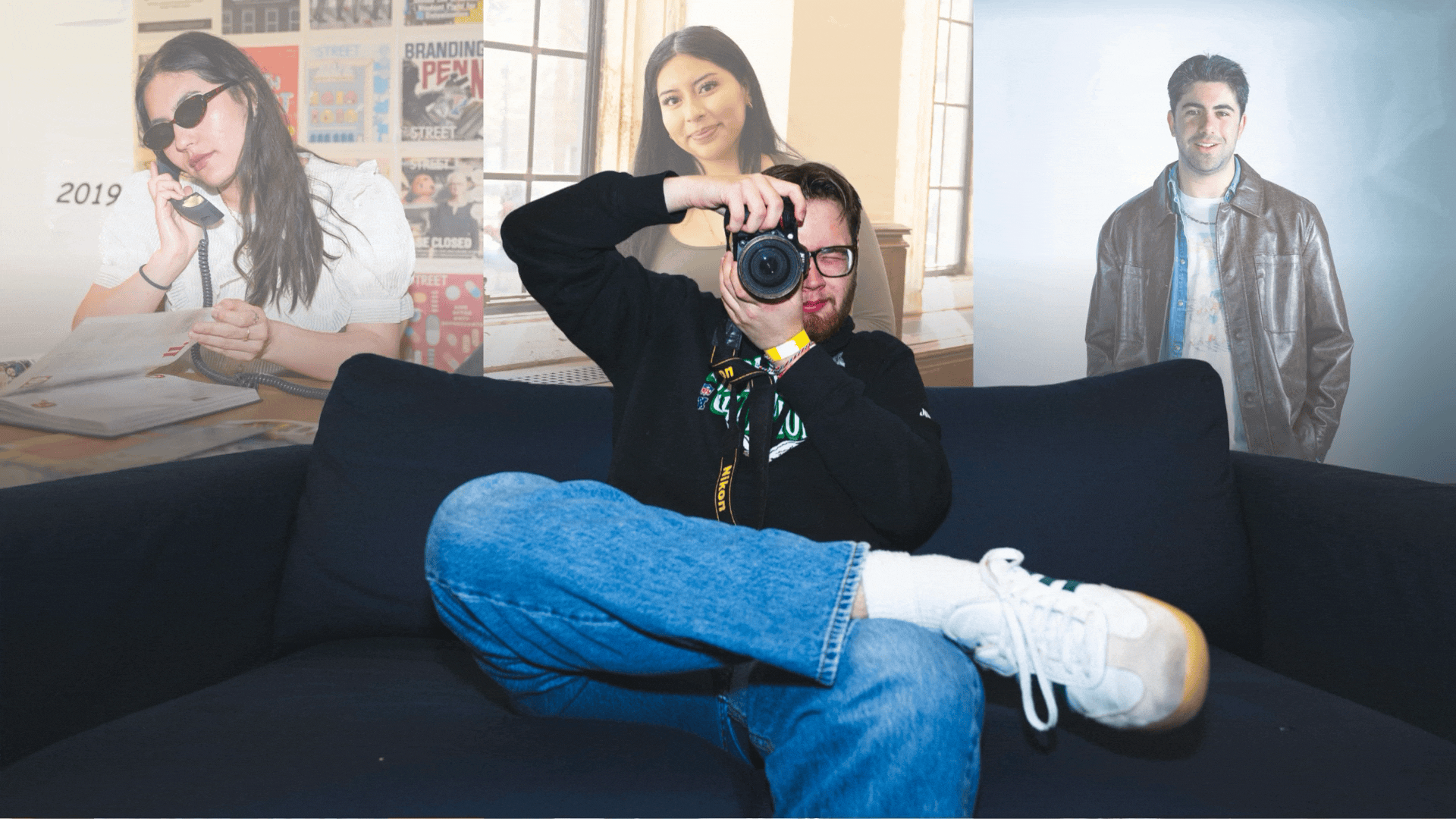Wading through through the throng of bourgeois hipsters at Hot Yoga Santa Monica, I couldn’t help but think it was exactly the sort of place my mother would hate. I placed my Converse on a shelf next to someone’s Louis Vuitton bag, and nervously tugged at my hand–me–down tank top, still stained with waffle cone batter from my job at an ice cream shop. The studio was hot, and I placed my mat, branded RENTAL all the way across, in the only remaining spot: between an ostentatious gong and an elderly man who was, I kid you not, ripped. He smiled at me in solidarity, for though I didn’t know it at the time, we had both elected to torture ourselves in that room. What I did know for sure was this: 1) I was the only woman in the room wearing a shirt—without an irrationally small hip to waist ratio—and 2) I felt like absolute shit.
The series of life events which led me to that special hell were unique. I grew up in a mixed culture family. My Indian step–dad and my white Ohio–born mother raised me in a quasi–Hindu, quasi–Christian household since I was five. We attended pujas about as often as we attended mass, decorated our Christmas tree to Bollywood music, watched Hanuman and Ganesh cartoons on the weekends, and made periodic visits to my step dad’s family in Kolkata, with whom I had learned to communicate in broken and very basic Bengali. My step–grandfather was a close part of our family. We often would walk in on him reading the Bhagavad Gita or doing yoga on an old rug in his modest apartment.
It was my mother, though, that inspired me to start practicing. Young and imitative, I watched her drive off to her mysterious yoga classes every week and get up at seven to practice in our living room. She had increasingly propagandized the room with the philosophical fruits of her practice: a plaque reading “Namaste, Y’all” that she found hilariously ironic, a wall hanging reading “Begin Again,” and a metal decal instructing “Live Gratefully.”
The first yoga class I accompanied her to was awkward. The instructor adjusted me as I tried my best to imitate the twists and stretches of the anonymous yogi in front of me, even when my muscles burned or I lost my balance. Afterwards, though, I’ll never forget that my mom told me I looked “very strong,” and I realized that that was exactly how I felt. For an hour or so, I had done my body the kindness of taking the time to care for it, and connected it to a controlled yet free mental state. That’s why I went back, and eventually my mother bought me a mat so I could always return to the feeling of genuine mind-body connection, strength, energy, focus, and self–reflection.
I felt none of those things at Hot8Yoga, an LA yoga studio chain. As if the kombucha fridge, eucalyptus towels, electrolyte shot station, and merchandise counter I passed on my way in weren’t enough indication that I was about to practice a different kind of “yoga,” the class itself surely made it clear. The vinyasa sequences moved quickly, and the other asanas (poses) were mainly tricky balances. We even started doing crunches midway through, which is definitely not an asana. For the gratification of the influencers, who hoisted their logoed leggings high into the air like banners, we were encouraged repeatedly to use the mirrors which covered all sides of the room. There was, evidently, a certain way to look.
I didn’t look cute. One of my two braids had completely unraveled, half my unruly hair stuck to the sweat on the side of my neck, and my face blushed a concerning shade of crimson. It was a workout class, not a yoga class, to be sure. All my mental energy had gone into ensuring I didn’t slip on my own sweat rather than connecting with my body and breath. Still, I felt kind of good. The endorphins, the glamour and grandeur of it all, being surrounded by really fit people in a studio whose walls were literally marble—the idea of being a Los Angeles yogi was sexy.
I wasn’t used to that type of yoga and I did not fit into that class. Still, I felt that with enough effort, one day I could. When I tried to practice on my own, I grew restless. I knew the asanas and sequences that made me feel good—it just didn’t feel good enough. I was forced to consider the possibility that I had fallen victim to an industry which sold yoga as a commodity, which perpetuated the notion that yoga is transactional rather than personal.
This concept has dangerous implications. Since traditional yoga is anti–material, successfully marketing yoga means marketing an “aesthetic.” The resultant caricature is a peace–loving fitness buff to whom being a yogi means looking like a yogi. Moreover, the fact that yoga, of all things, is being used as a tool of capitalism is ironic, as the practice is traditionally meant to be accessible to all people for self improvement. Pre–classical yoga derived from the Upanishads as a practice of ego removal through awareness of the self, classical yoga as a path to enlightenment, and post–classical yoga as transcendence from physical world through mind–body connectedness. Now, it is marketed as an aspect of a glamorous lifestyle you can purchase if you can afford, and alienates a whole swarm of demographics including, but not limited to, lower income and plus sized people. And when you think about it in terms of intersectionality, it makes perfect sense. Yoga cannot exist on a large scale in a Western capitalist context when capitalism is by its very nature tied to socioeconomic, gender, and racial oppression and all its intersections.
Thinking of yoga transactionally is not a new concept in Western yoga. Karl Marx identified the phenomenon of commodity fetishism in the 1800s—and we see this in yoga. Choudhury Bikram, an Indian immigrant to Los Angeles, actually tried to copyright his sequence of 26 asanas in ninety degree heat for profit as his teacher training program gained traction in the US, and used his status as a “guru” to rape and sexually assault many of his female students, threatening their careers if they did not submit to him. Bikram was also known to have body–shamed both his students for not appearing slender.
Bikram isn’t just a case study. Besides the fact that his influence has been hugely pervasive particularly in hot yoga culture, which he himself brought to the states, the Western yoga industry is inseparable from the implicit sexualization of women’s bodies. The notion of the feminine “yoga body” as being slim yet toned, strong but not too muscular–looking, is central to the yoga marketing industry. For instance, while the average American woman’s waistline is between 34 and 35 inches, Lulu Lemon’s largest size (XXXL) fits only a 35 inch waist, maintaining the sexy, marketable aesthetic. To account for profits lost on the higher side of the mean, companies market “yoga for weight loss” programs.
Similar bastardizations of yogic ideologies have manifested in various disturbing trends such as “Breathtarianism,” where young girls engaged in many hours of yogic breathing to curb hunger and allegedly receiving all their nutrients from fruit juices and the air. In such cases, eating disorders are being caused by sexual standards of the female body in a western yoga context, and legitimized or justified by western yoga itself.
I was not immune to this. My first year living in Los Angeles marked a fresh bout of body dysmorphia and disordered eating patterns, triggered after attending yoga classes. I was in the gym sometimes twice a day, but I wasn’t there to be healthy. And even if I wasn’t attending classes that frequently, Instagram’s algorithm populated my feed with toxic yoga content: “Yoga Poses for da Booty,” “How a Yogi Crosses Her Legs,” and images which otherwise reinforced the concept of yoga as a look rather than a feeling, an ideal rather than a fulfilling practice.
It is a tragedy that the integration of yoga as a capitalist tool has conditioned many to believe that modest personal practice is not good enough practice. This is not at all to say that yoga classes can’t be fulfilling or beneficial, but in my experience, after I transferred from UCLA to Penn, the only truly healthy practices I have had have been contingent on my understanding yoga as what I want it to be.
When my mom told me I looked “very strong” she wasn’t commenting on my gangly seventh grade physique, but rather the stability reflected in of the asanas. When this distinction is made on an individual level, it opens up yoga as an inclusive space for personal practice.







